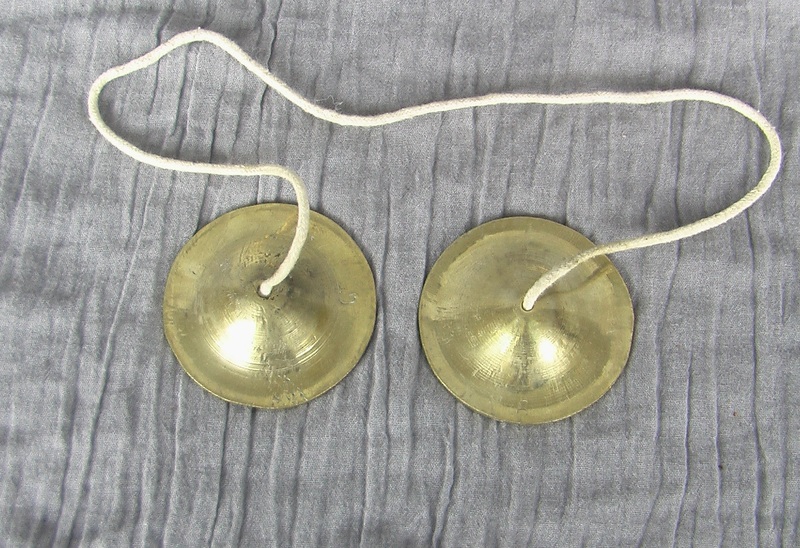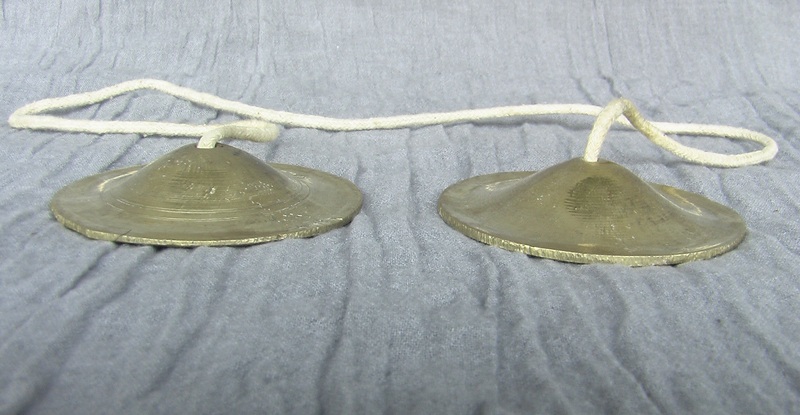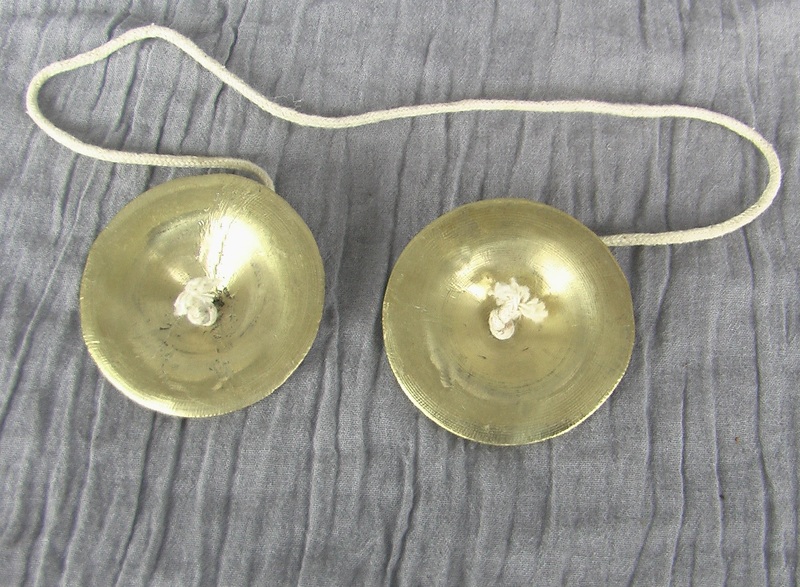manjira
Contextual Associations
Manjira is a pair of cup cymbals idiophone from Uttarakhand State, India. Purchased in the city of Haridwar in 1953 by Marianna Presler McJimsey while a student studying in India, she reports manjira to be “… easily portable, used by Sadhus [Hindu religious aesthetics], donkey train drivers, children, families, teachers—ubiquitous, in 1953.” A main of use for this instrument is to accompany the singing of Hindu devotional songs (bhajan).
Description
Two basically identical, circular discs of brass each with a raised boss at its center and a slightly upturned rim (detail #1). At the center of each boss a hole is drilled, through which the end of a rope is passed and then knotted on the inner side of the boss (detail #2).
Player - Instrument Interface and Sound Production
The player holds the rope with the thumb and first finger of each hand just above the boss of each cymbal. He/she basically strikes them rim against rim to produce a shimmering, ringing sound.
Origins/History/Evolution
The origin of manjira is unknown but is believed to be very old due to its associations with Hindu devotional singing and dance forms.
Bibliographic Citations
Dick, Alastair. 2014. “Manjira.” GDMI v.3: 390.
Dick, Alastar, and Pribislav Pitoeff. 2014. GDMI v.4: 689-670.
Personal correspondence with Marianna Presler McJimsey, 11 September, 2024.
Instrument Information
Origins
Continent: Asia
Region: South Asia
Nation: India
Formation: Hindu
Classification (Sachs-Von Hornbostel revised by MIMO)
111.142 idiophone--cymbals: vessel clappers with everted rim are struck against each other
Design and Playing Features
Category: idiophone
Energy input motion by performer: brushing
Basic form of sonorous object/s for idiophone: bell-shaped vessel - with opening
Sound objects per instrument: two sounded collectively
Resonator design: no resonator
Number of players: one
Sounding principle: concussing - direct
Sound exciting agent: colliding sonorous objects
Energy input motion by performer: brushing
Pitch of sound produced: definite pitch
Sound modification: none
Dimensions
2.8 in. diameter of each cymbal
0.4 in height of each cymbal
22 in. length of rope between two cymbals
Primary Materials
metal
Entry Author
Roger Vetter



